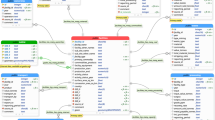Simple arithmetic underpinned trading throughout the Near East during the Bronze Age.
Abstract
Raw materials recovered from archaeological excavations in the Indus Valley, the Persian Gulf, Mesopotamia, Egypt and the eastern Mediterranean reflect the existence of long-distance trading during the Bronze Age, which united these regions into networks of commercial exchange. As each region relied on a different set of weights for trading, a straightforward conversion system must have been in operation. Here we describe a simple and universal conversion system that could have provided an economic key to the trade networks of the Old World between 2500 and 1000 bc.
This is a preview of subscription content, access via your institution
Access options
Subscribe to this journal
Receive 51 print issues and online access
$199.00 per year
only $3.90 per issue
Buy this article
- Purchase on Springer Link
- Instant access to full article PDF
Prices may be subject to local taxes which are calculated during checkout

Similar content being viewed by others
References
Roaf, M. Iraq 44, 137–141 (1982).
McDonald, D. M. The Origins of Metrology (McDonald Institute for Archaeological Research, Cambridge, 1992).
Bibby, T. G. Kuml 1970, 345–353 (1970).
Powell, M. A. in Studies in Honour of T. B. Jones (eds Powell, M. A. & Sack, R. H.) 71–201 (Kevelaer, 1979).
Edzard, D. O. (ed.) Reallexikon der Assyriologie und Vorderasiatischen Archäologie Vol. 7, 457–517 (de Gruyter, Berlin, 1990).
Parise, N. F. Dialoghi di Archeologia 3, 155–159 (1981).
Zaccagnini, C. in Traffici Micenei nel Mediterraneo (eds Marazzi, M. et al.) 303–314 (Istituto per la Storia e l'Archeologia della Magna Grecia, Taranto, 1986).
Zaccagnini, C. II Congresso Internazionale di Studi Fenici e Punici 343–347 (CNR, Roma, 1991).
Courtois, J. C. Res. Orientales 2, 119–127 (1990).
Frank, A. G. Curr. Anthropol. 34, 383–429 (1993).
Author information
Authors and Affiliations
Corresponding author
Supplementary information
Rights and permissions
About this article
Cite this article
Mederos, A., Lamberg-Karlovsky, C. Converting currencies in the Old World. Nature 411, 437 (2001). https://doi.org/10.1038/35078143
Issue Date:
DOI: https://doi.org/10.1038/35078143
Comments
By submitting a comment you agree to abide by our Terms and Community Guidelines. If you find something abusive or that does not comply with our terms or guidelines please flag it as inappropriate.



